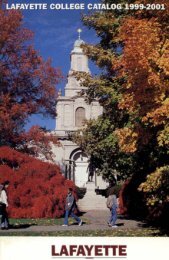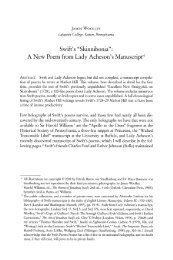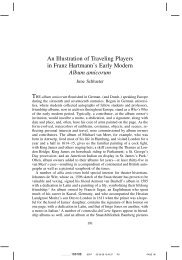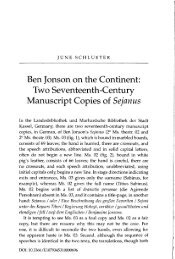Ziolkowski-Dost ... ianTradition-2001-p156.pdf
Ziolkowski-Dost ... ianTradition-2001-p156.pdf
Ziolkowski-Dost ... ianTradition-2001-p156.pdf
You also want an ePaper? Increase the reach of your titles
YUMPU automatically turns print PDFs into web optimized ePapers that Google loves.
166<br />
ERIC ZIOLKOWSKI<br />
The second scene whose incarnational import I want to consider<br />
occurs in The Idiot, whose hero, as we know from <strong>Dost</strong>oevsky’s letters<br />
and notebooks, was consciously conceived to blend the images of<br />
Don Quixote and the Johannine Christ. Just as there are indications<br />
in the novel’s first part that Nastasia implicitly recognises M yshkin’s<br />
saintly or Christlike nature, so Aglaya Epanchina explicitly recognises<br />
his quixotic nature in part 2. After reading a letter from the<br />
prince, she places it in a volume o f Cervantes’s novel and bursts out<br />
laughing.38 Later, in the company o f her family, the prince and<br />
others, she explains the link between Pushkin’s ballad A Poor<br />
K night’ and D on Quixote (266), and then recites the ballad aloud<br />
from memory, slyly changing the letters inscribed on the hero’s<br />
shield, A. M . D. (Ave Mater Dei), to A. N. B. (Ave Nastasia Barashkova)<br />
(2:7). Although the mocking association which Aglaya means to draw<br />
between the prince and the two literary knights escapes most o f the<br />
persons present, the prince discerns it, and there is something<br />
strangely fatalistic about the way the content o f the Pushkin poem<br />
becomes infused, or incarnated, in his subsequent life. (Noteworthily,<br />
he will later proceed to read all o f Pushkin’s works with Rogozhin<br />
(556)). His unflagging compassion for Nastasia, the ‘fallen’ woman,<br />
will recall not only Christ’s refusal to condemn the adulterous<br />
woman (another story from John’s Gospel) but also A glaya’s interpretation<br />
o f the ‘poor knight’ as one who would still ‘believe in’ his<br />
lady ‘even if she became a th ief’ (266). Aglaya will even hint at these<br />
associations when she later suggests to him that he is ‘sacrificing’<br />
himself by refusing to marry Nastasia (445). By the end, when he<br />
winds up back in the Swiss sanatorium as a relapsed idiot, we will<br />
realise the extreme extent to which he incarnates the closing stanza<br />
o f ‘A Poor K night’: ‘Returning to his distant castle, / There he lived<br />
and sighed, / Ever silent, sad, and cheerless, / O f reason bereft, he<br />
died’ (quoted at 269).<br />
W hile it was out o f compassion and for Raskolnikov’s spiritual<br />
benefit that Sonya read to him from the Gospel, Aglaya recites the<br />
Pushkin poem with her mocking insertions specifically in order to<br />
prick and embarrass the prince. Nonetheless, Sonya’s reading and<br />
A glaya’s recitation end up having comparable effects, infusing the<br />
minds (and hence the actions and lives) o f Raskolnikov and<br />
Myshkin with the images o f the Johannine Christ and the Christlike<br />
knight. It is therefore left to Ivan K aram azov to be so bold as<br />
to as to retrieve from the Bible and, in effect, to re-incarnate the











